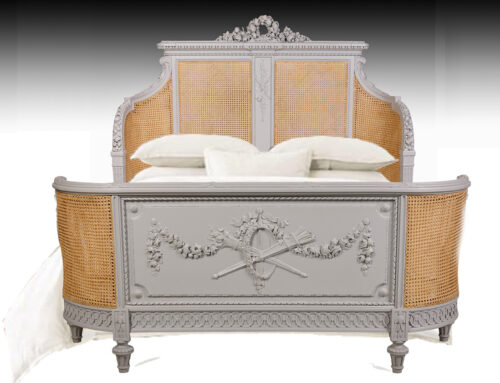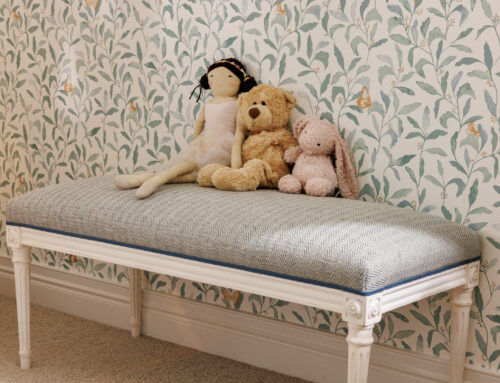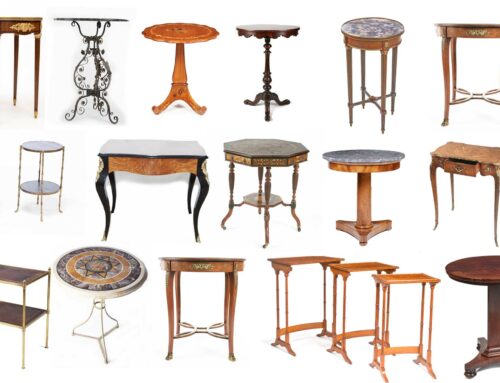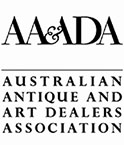Watch our Video of the Respectful Restoration of a Beautiful French Louis XVI Bureau Plat
At Wallrocks, we believe the bureau plat is an essential item for a beautiful office! Practical, utilitarian, beautiful and gorgeously crafted all rolled into one. What more could one ask for in a piece of furniture? We recently imported this beauty into Australia, and suffice to say, despite the elegant bones, it needed a little tender loving care.
This large and exceptional French Louis XVI bureau plat has undergone respectful restoration recently by our Master Restorer. The fabulous grain and inlay has been re-awakened and the original gold leaf all still there under centuries of grit and grime. Watch our video below and discover the transformation.
History of the French Bureau Plat
Favoured by the French, the bureau plat, was originally conceived as a broad surfaced flat-topped writing table that was designed with several drawers just beneath the table surface. Historically, writing implements were kept in these drawers. At the time, it was not uncommon for the surface of the desk to house an inkwell and blotter, often with a powder or sand tray in the drawers beneath.
Leather was the favoured writing surface, as it was conducive to writing with a quill or fountain pen. In the manufacture of a bureau plat such as this one, no expense was spared in its execution, and when it came to achieving the level of detail required to supply their discerning clientele, no corners could be cut.
The bureau plat found its way into libraries and drawing rooms, where they were also used as reading tables and on display to important guests. Consequently, the importance of beautiful design was paramount, as they were ultimately a measure of the owners station in life and a sculptural object in their own right. Enquire about this bureau plat.
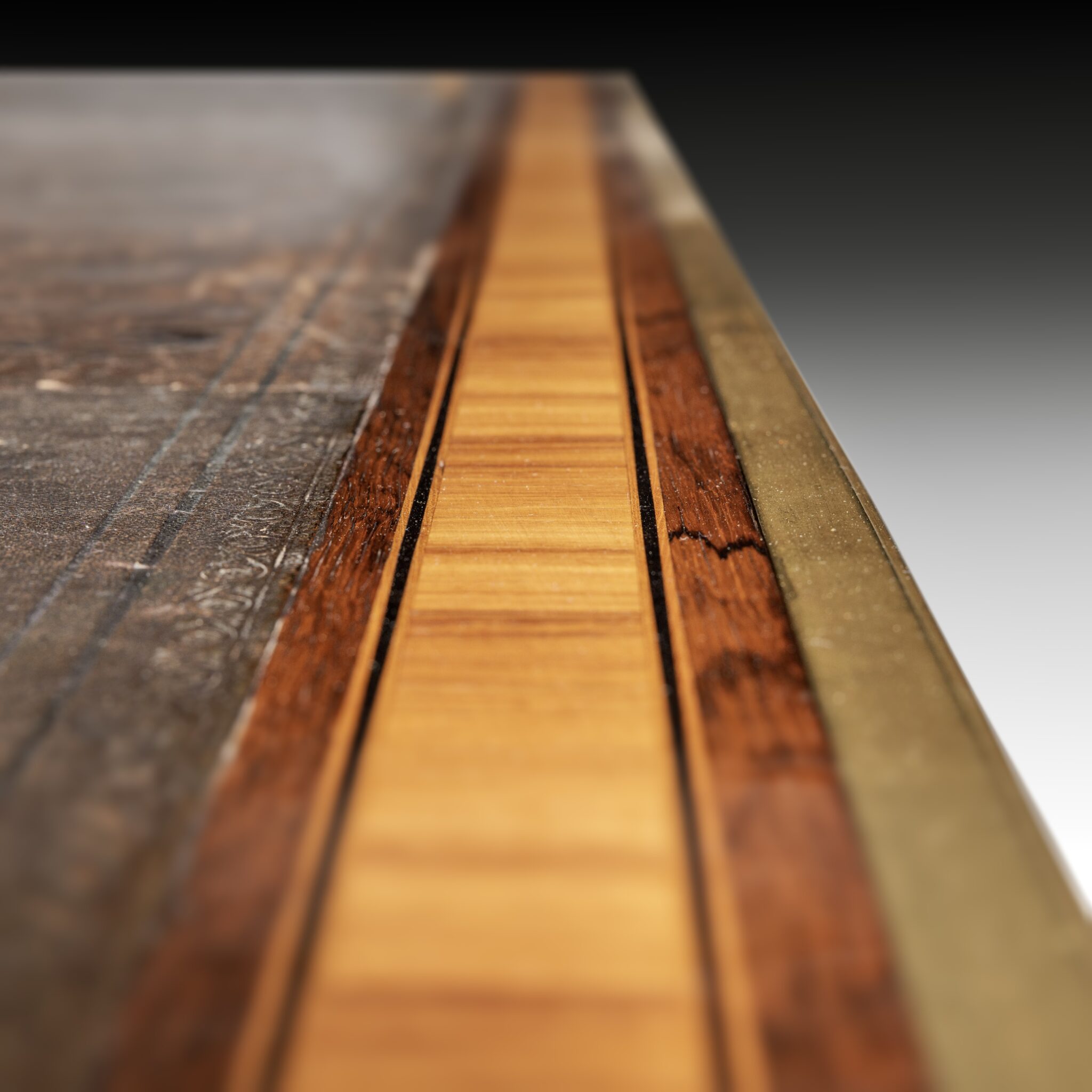 Cross Banding:
Cross Banding:
Cross-banding, at its best, is one of the most decorative attributes of fine furniture. The process of creating an opposing border of veneer with grain running at right angles to the grain of the adjourning veneer, and often variable in colour. Used purely as a decorative feature, the effect was particularly enhanced when the veneer grain and contrasting tones opposed one another. Timbers with bold grain such as Kingwood and Rosewood, Tulipwood and many others were considered favourable choices for cross-banding.
 Leather:
Leather:
The surface of a bureau plat will usually be covered in leather – a material which was aesthetically pleasing and useful.
On a fine bureau plat the leather was likely to be embellished with either gold tooling or blind tooling. Gold tooling is the method of impressing lettering or a decorative design, through a sheet of 22 or 23 karat gold leaf, onto a leather, paper or cloth surface. ‘Blind’ tooling is an almost identical technique but without the addition of gold leaf.
When restoring a fine bureau plat, where possible we retain the original leather, which are imbued with character and tell a story of their own. If, however, the leather is unsalvageable, we do source the finest quality, hand-made and dyed leather with gold tooling and a design and colour of your choice.
Gilding:
Bronze Dore or ormolu, the definition of the word meaning ground or pounded gold explains the technique of administering ground, high carat gold amalgam to a piece of bronze. First a cast or model was produced from terracotta moulds made from liquid brass or bronze. The cast metal mount was then wrought by hand, to a greater of lesser extent dependant on the quality desired, extracting greater or lesser detail accordingly. Gilt was then applied in a multi-step process. You can read more about the process of gilding here.
Please click here to see this exceptional bureau plat in more detail.


 Leather:
Leather:
